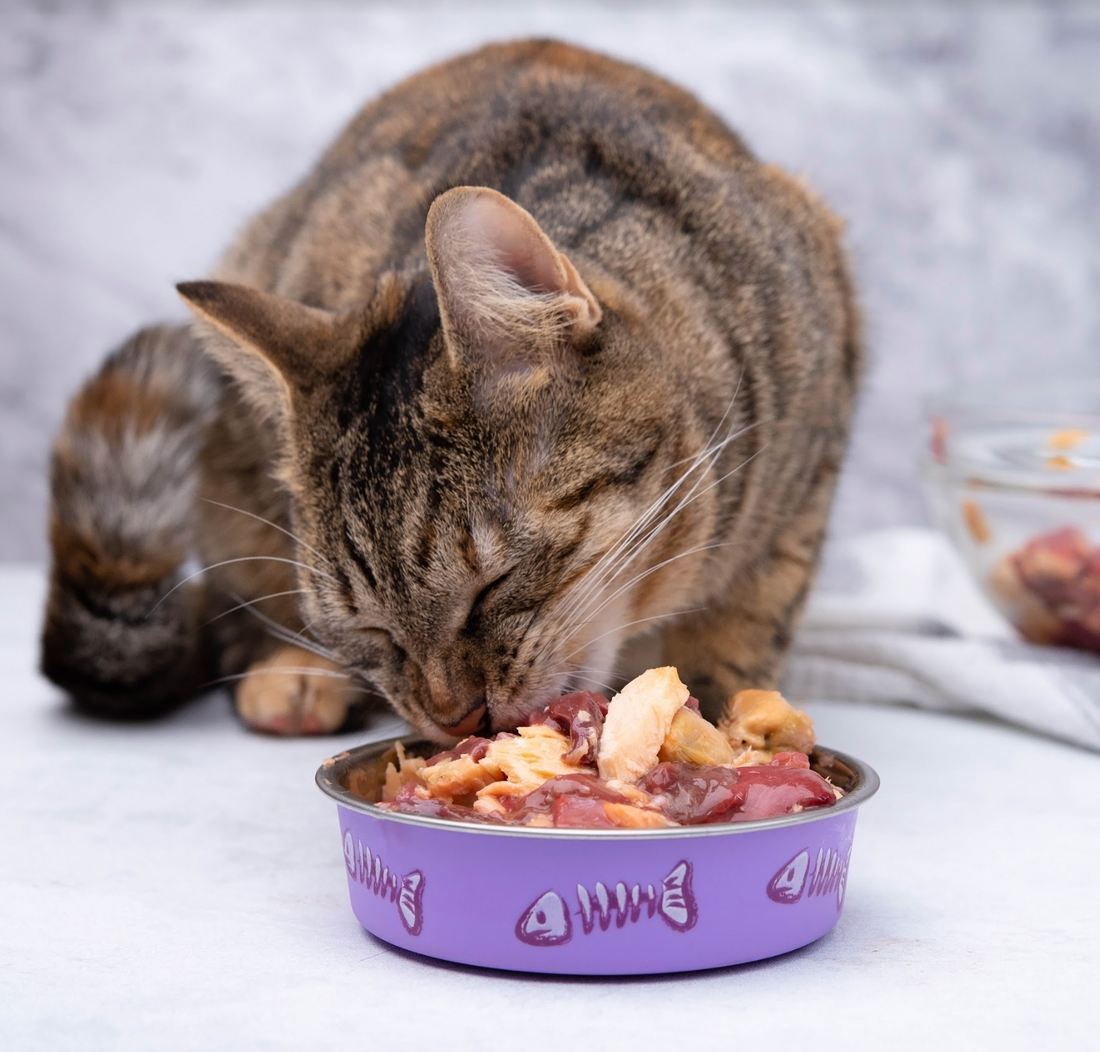
How To Transition Your Cat To A Fresh Food Diet
Transitioning your cat to a homemade diet will be a breeze for some and a little unpredictable for others. (and if you need guidance on recipes and meal plans check out our pet nutritionist program here)
Some cats will jump right into fresh food with no hesitation or digestive upset, while others will require some coaxing and some may experience an upset tummy.

Both of these situations are completely normal and generally no cause for concern.
Fortunately the solution to both is usually simple: introduce news things slowly, giving your cat the opportunity to adjust, both behaviourally and digestively.
If you are confident that your cat is resilient, shows a keen interest in eating fresh food, or is already eating some fresh foods, you may be comfortable making the switch cold turkey and diving right in. If this works for you, go for it.
If your cat is shifting from a processed diet, their gut microbiome – which is all of the microorganisms and populations of bacteria that assist with digestion and nutrient absorption – may need some time to adapt.

This is because animals fed a processed diet do not have the same microbiome diversity as fresh fed animals.
The good news is that the gut microbiome adapts fairly quickly, and there are things we can do to help this process along, as well as tricks to avoid any major digestive upsets.
Some cats do also just have more sensitive stomachs than others, so in these cases this can take longer and require a bit more persistence and patience.
The main way to combat potential fallout from dietary changes is to make them gradually.
This may mean you don’t begin the full meal plan immediately, and instead just feed plain muscle meat to begin with – for example, either the pork or kangaroo featured as the main ingredient in week one of the Healthy Active Pet recipes and healthy cat program.

If they tolerate this well, you can add other foods and build up to the full recipes over a week or so, then begin the plan in its entirety.
Always wait to add organ meats until they have adjusted to eating fresh food, and start with small amounts.
If your cat is fussy or sensitive, you may find it preferable to add small amounts of the new food, mixed in with their old food.
Start with up to 1/4 of a week one recipe and gradually increase it as they get used to it, decreasing their old food until you are feeding only fresh food.
Don't worry if this takes a bit of time, repeat each week as many times as you need until your cat is happy and enjoying their new food comfortably. Once this is complete you can start the 4 week program for real!
You may also utilise a few other tricks to help ease the transition.

These include adding a homemade bone broth, starting a course of probiotics or including probiotic rich foods, offering some digestive enzymes, adding cooked pumpkin to each meal, serving the food warm or even lightly searing the raw food to begin with, then gradually reducing the cooking time.
Cats can be stubborn creatures, so we’ve included some extra tips in our troubleshooting guide in our program if you’re finding it hard to get them interested.
And if you want to try the Healthy Active Pet recipe program you can take a look at it here
